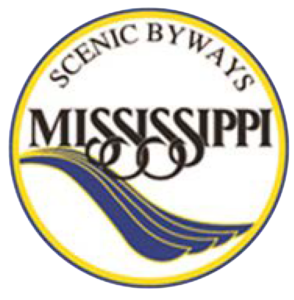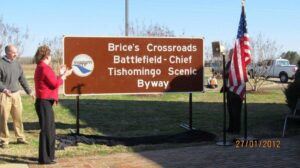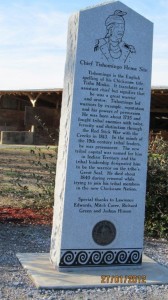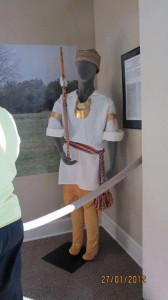Attractions
Audio Tour
Brice’s Crossroads National Battlefield is open sunrise to sunset and an audio tour is available below.
Bookstore & Gift Shop
The bookstore/gift shop at Mississippi’s Last Stands Visitor’s and Interpretive Center offers a variety of American Civil War titles and souvenirs. The store is located inside the center and proceeds from sales help support the maintenance and interpretation of the battlefields.
Souvenirs from the 1860 era include jaw harps, bonnets, harmonicas, miniature canons and soliders, and much more. Biographies written by trusted historians include those of Robert E. Lee, Abraham Lincoln, Nathan Bedford Forrest, Joseph Johnson, Tyree Bell, Albert Sidney Johnson and U. S. Grant. Military histories of local battles are available from historians and some are written by men who served first hand in the conflicts.
Puzzles, cups, pencils, paper dolls, coloring books, Confederate and Union caps, bookmarks, magnets, key chains, and lapel pins are also available. Books by the late Claude Gentry, local author, are available while supplies last.
Bethany Historic Cemetery
As the original site of the Bethany Presbyterian Church, the Bethany Historic Cemetery predates the Civil War by about ten years. Adjacent to the Park Service monument site, the cemetery contains a mass grave in which about thirty Confederate soldiers are buried and upon which the markers for ninety-six of the Confederates known to have been killed at Brice’s Crossroads have been placed. Many of the area’s earliest settlers are also buried here. Union dead from the battle were buried in common graves on the battlefield, but later were reinterred in the National Cemeteries in Corinth and Memphis.
The following is an alphabetical list of soldiers who were killed or mortally wounded at Brice’s Crossroads near Baldwyn, Mississippi June 10, 1864.
- Adams, William A.
- Arant, Arron
- Arnold, J. Robert
- Arrandale, J.J.
- Autrey, John
- Barham, Isaiah
- Bazzell, T.W.
- Bean, R.L.
- Bell, J.S.
- Bishop, Joseph
- Bettis, M.
- Boaz, Daniel B.
- Bost, George H.
- Boucher, Thomas P.
- Cage, William H.
- Camp, R.A.
- Carroll,G.S.
- Casey, R.C.
- Chambers, W.M.
- Christian, George Cabell
- Cock, Jubal C.
- Cole, J.W.
- Coleman, Carr
- Coleman, Daniel J.
- Cooper, William H.
- Davis, John T.
- Dean, John A.
- Dodds, Zack E.
- Duke, R.E.
- Edgman, JohnL.
- Edwards, Lewis W.
- Edwards, S.B.
- Edwards, William J.
- Elcan, Thomas R.
- Ellis, Coleman
- Everette, James T.
- Exrum, John
- Freeman, G.J.
- Galbraith, Peter W.
- Garneer, Isaac H.
- Garner, James O.
- Gilbert, Harden
- Gilbert, J.B.
- Govan, W.W.
- Green, Memucan H.
- Hall, Columbus K.
- Haley, H.C.
- Hamilton, R.L.
- Haney, W.J.
- Hardy, William C.
- Harper, Richard H.
- Harper, Richard H.
- Harris, Jessie L.
- Harrison, J.T.
- Haskins, J.E.
- Hawkins, Samuel Davis
- Hibbit, J.R.
- Hogg, W.R.
- Holmon, Sandy
- Hoover, E.P.
- Horne, Samuel
- Jackson, W.E.
- James, Robert W.
- Jennings, Albert
- Jones, G.P.
- Jones, M.B.
- Jones, R.H.
- Jones, Robert W.
- Jourdan, James C.
- Kendrick, H.C.
- King, J.H.
- Kirksey, J.H.
- Klapp, F.M.
- Lawrence, John Quincey
- Lee, George
- Luther, C.H.
- Mason, W. Nathaniel
- Masters, John N.
- McCorkle, H.C.
- McCrosky, J.S.
- McMillion, Alexander E.
- McMorris, Michael
- Meshew, Charles H.
- Mosely, Frank M.
- Murphrey, Solomon
- Nailling, E.P.
- Neely, Charles R.
- Nichols, Aaron
- Nolley, Samuel Y.
- Norman, B.F.
- Owens, Robert
- Peck, Robert L.
- Peele, J.A.
- Pipkin, Isaac H. (Doc)
- Poindexter, Lewis H.
- Pope, William S.
- Porter, William H.
- Potts, A.L.
- Powell, Thomas K.
- Pryor, J.S.
- Quaarles, W.
- Rayner, William S.
- Rennick, A. Thomas
- Revely, Joseph P.
- Rice, Thomas S.
- Robertson, William T.
- Saunders, M.L.
- Seay, Robert M.
- Sewell, Allen K.
- Shuffield, C.S.
- Simmons, T.C.
- Smith, A. J.
- Smith J.W.
- Sommerville, James R.
- Spencer, John William
- Stahl, M.L.
- Stahl, W.
- Stewart, William J.H.
- Stovall, J.B.
- Stover, J.D.
- Stuart, Joseph
- Swetto, J.M.
- Tate, William J.
- Taylor, James
- Thorn, William T.
- Trice, William S.
- Turner, John
- Tyson, P.G.
- Veazey, Simeon
- Wakeland, H. Frank
- Walker, Benjamin L.
- Walker, R.F.
- Warden, James
- Webster, Samuel
- Welch, W.R.
- White, R.B.
- Whitworth, G.W.
- Williams, George W.
- Williamson, Joseph A.
- Wilson, J.J.
- Wyatt, W.S.
Log Cabin Knoll
The ridge that overlooks the Tishomingo Creek is the site where Confederate artillery, led by Captain John W. Morton, rained fire upon the U. S. troops as they retreated from the Crossroads. As one approaches the interpretive trail at the overlook, he can imagine the wooded area where the guns and caissons moved through the woods from the crossroads, along primitive, muddy roads. Land that was in use in the 1860’s was likely to be farmland, for the cultivation of crops such as cotton and corn, but much of the area remained wooded with dense underbrush. In 1864, reports say a log cabin sat on this site.
Tishomingo Creek Bridge
The end of the main part of the Battle at Brice’s Crossroads centered on a small bridge across Tishomingo Creek. A narrow structure soon became a bottleneck for General Sturgis expeditionary force as horses, wagons, cannon, and men attempted to cross the creek.
The rains of the previous several days had raised the water level of the creek, making it difficult to cross without using the bridge.
A replica of the Tishomingo Creek Bridge, which was located, in June, 1864, about 50 yards north of the present bridge on Highway 370, interprets the rout of the Union troops. Long before Americans fought at this site in a battle of North vs. South, this land was part of the Chickasaw Nation. Tishomingo, whose name derived from the Chickasaw title tishu minko meaning “speaker for the chief” or “assistant chief” in the Chickasaw language, lived near here and was a prominent leader of the Chickasaws in this district.
Tishomingo’s name is still attached to this creek, a town, and a Mississippi county which originally extended from the Tennessee River to with a few miles of here. The tribal capital in the west was also named for him and persists today as Tishomingo, Oklahoma. The tribal legislature also designated Tishomingo to be the warrior on the Chickasaws’ Great Seal.
Tishomingo died in present-day Arkansas about 1840 while assisting tribal members on the Trail of Tears. His grave is unknown, but a quote from an 1841 obituary read: “Although but little known beyond the limits of his nation, yet he was a man that had seen wars and fought battles-stood high among his own people as a brave and good man.”
Jourdan Grave Site
This, the final resting place of Sergeant James C. Jourdan, lies northwest of the crossroads. Jourdan, a cavalryman in the 17th Alabama Battalion commanded by Major J.N. George, Colonel William A. Johnson’s Alabama Brigade, was killed during the pursuit of General Sturgis by Union forces and buried near the Phillips House on the old Ripley Road. Two cedar trees have always marked his grave.
The site, located on Union County Road 168 includes a pull off and is the trailhead for the 1/3 mile natural walking trail, which follows the original roadbed and retreat route and takes the visitor across Phillips branch and by the two graves of Smith and King and ends at the White House Ridge. The two Confederate privates, Henry King and A. J. Smith were mortally wounded at the site and buried where they fell. King was a cannoneer who died when his unit was attacking the Union stand on the White House Ridge. He died “with his rammer staff in hand.”
". . .the site includes land associated both with the Union advance and flight. It is land intimately identified with Sturgis’ rout, underscoring why the Battle of Brice’s Cross Roads is so significant.” "It also underscores General Nathan Bedford Forrest’s philosophy of war to get the ‘skeer’ on the enemy and keep them‘skeered.”
Ed Bearss, Historian Emeritus, National Park Service
White House Ridge Site
The trail ends at a pull off on the present Union CR 167, the site of the home of Enoch Agnew, a planter and retired physician, who moved from South Carolina with his family in 1852. It was here that the Union forces made their final stand on June 10, 1864. Also living here was his son, Rev. Samuel Andrew Agnew who was 30 in 1864. Rev. Agnew is widely known for his first- hand account of the June battle and its aftermath, and his diary, which he kept from the 1850’s till his death in 1902. Samuel Agnew continued to live at White House Ridge and was pastor of the Bethany A.R. Presbyterian Church located at the Crossroads from 1867 till his death. A complete set of Rev. Agnew’s diary is available for reading and research at MS Final Stands Interpretive Center.
U.S. Colored Troops Stand
African-American troops, many of them former slaves, made up the 55th and the 59th Colored Infantry Regiments. At the White House Ridge, they attempted to stop the Confederate pursuit or at least slow it down to give the other U. S. regiments time to get themselves and the wagon train to safety. They fought bravely and advanced to within “hand shaking distance” of the Confederate guns.
At the Battle of Brice’s Crossroads, the USCT units engaged here would suffer 412 casualties with:
110 Killed
134 wounded
168 missing
3rd Brigade Colonel Edward Bouton
55th Colored Infantry, Major E.M. Love, Captain A.T, Reeves
59th Colored Infantry, Lieutenant Colonel Robert Cowden, Captain J. C. Foster
Company F, 2nd U.S. Colored Artillery (2 guns), Captain C. A. Lamburg
“The colored troops made for themselves on this occasion a brilliant record. Their gallant and soldierly bearing and the zeal and persistence with which they fought, elicited the warmest encomiums from all officers of the command. Their claims to be considered as among the very best soldiers of our army can no longer, in my opinion, be seriously questioned.”
Major General Cadwallader C. Washburn, US Army: District of West Tennessee
Ford-Agnew Group Use Area
Located on Highway 833 in the core area of the battlefield, the Ford-Agnew group use area, is a primitive campground and meeting site. Several acres of large trees provide shade and firewood is available along with access to water. It is available for both day and overnight use by Scout Troops and other organizations with permission from the Brice’s Crossroads National Battlefield Commission. The site is located on hallowed ground and all guests are expected to return the camping area to the condition in which it was found. No damage should be made to trees and all fire sites must be covered. Garbage should be removed when the site is vacated. The site is named for the family who settled this area in the 1850’s and whose descendants shared the ground with the Brice’s Crossroads National Battlefield Commission, the present owner.
Chickasaw Scenic Byway
 Visitors to the Baldwyn area and the battlefield are encouraged to travel and experience the “Brice’s Crossroads Battlefield-Chief Tishomingo Scenic Byway” that begins at the Mississippi Final Stands Interpretive Center (formerly the Brice’s Crossroads Visitors’ and Interpretive Center).
Visitors to the Baldwyn area and the battlefield are encouraged to travel and experience the “Brice’s Crossroads Battlefield-Chief Tishomingo Scenic Byway” that begins at the Mississippi Final Stands Interpretive Center (formerly the Brice’s Crossroads Visitors’ and Interpretive Center).
“The Brice’s Crossroads Battlefield-Chief Tishomingo Scenic Byway represents a tremendous educational, economic and tourism opportunity, and we are excited to designate this tourist designation,” Northern District Mississippi Highway Department Commissioner Mike Tagert said during the dedication of the byway,.
The Mississippi Department of Transportation (MDOT) placed seven signs, marking a segment of roadway in Lee and Prentiss counties as an official Mississippi Scenic Byway to be known as the “Brice’s Crossroads Battlefield-Chief Tishomingo Scenic Byway”.
 Named for the civil war battlefield and the tribal meeting sites and home site of Chickasaw Indians, the byway begins at the center where motorists can find archeological artifacts on display and interpretation of the battlefield and Chief Tishomingo.
Named for the civil war battlefield and the tribal meeting sites and home site of Chickasaw Indians, the byway begins at the center where motorists can find archeological artifacts on display and interpretation of the battlefield and Chief Tishomingo.
“The main goal of byway designation is to tell the history, identify resources, and work together to enhance the visitor’s experience,” said Lindsey Neatherland, planning division, MDOT.
Edwina Carpenter, former Director of the MS Final Stands Interpretive Center, along with local historian Mitch Caver, submitted the application and the Corridor Management Plan that was approved by the Mississippi Department of Transportation and the Mississippi Scenic Byways Committee in 2011. The Natchez Trace Parkway is also designated National Scenic Byway.
Rep. Jerry R. Turner, who introduced legislation during the 2011 Mississippi Legislative Session designating a segment of MS Highway 370 in Lee and Prentiss counties as the “Brice’s Crossroads Battlefield-Chief Tishomingo Scenic Byway” spoke about the importance of historic and scenic sites in promoting tourism in our state.
Continuing from the Interpretive Center, the byway route travels north on Grisham Street to its intersection with MS Highway 370, then continues west on Highway 370 to its intersection with County Road 833, then continues southeast on CR 833 to its intersection with CR 503, then proceeds south on CR 503 to its intersection with MS Highway 348, and then continues east on MS Highway 348 to its intersection with MS Highway 145 at Guntown.
 The byway takes visitors to the home site of Chickasaw Chief Tishomingo and several tribal sites, including Newberry’s and Campbelltown along CR 503 and Highway 348. Also along the route are several historic cemeteries that date to the settlement of the area. Tourists visiting the center and the battlefield can use the road and enjoy pull-offs and trails where interpretive signs educate the public. The byway will heighten the public’s awareness of the battlefield and the interpretive center where thousands visit annually, as well as the presence of the Native-American culture and heritage of the area.
The byway takes visitors to the home site of Chickasaw Chief Tishomingo and several tribal sites, including Newberry’s and Campbelltown along CR 503 and Highway 348. Also along the route are several historic cemeteries that date to the settlement of the area. Tourists visiting the center and the battlefield can use the road and enjoy pull-offs and trails where interpretive signs educate the public. The byway will heighten the public’s awareness of the battlefield and the interpretive center where thousands visit annually, as well as the presence of the Native-American culture and heritage of the area.
A brochure and maps are available at the center.
A memorial dedication to the memory of Chickasaw Indian Chief Tishomingo as Soldiers of the War of 1812 was hosted by the Major General Thomas Pickney Chapter Daughters of 1812 on October 18, 2014.
The Welcome was given by Thelma Saxon, president of the chapter, where a marker stands identifying the homesite of Chief Tishomingo on CR 503 in Guntown.
The invocation was given by Judge James Roberts, followed by the pledge led by Lottye Bettes Beasley.
 Local historian Mitch Caver presented the history of Chief Tishomingo and Chief George Colbert, soldiers in the War of 1812.
Local historian Mitch Caver presented the history of Chief Tishomingo and Chief George Colbert, soldiers in the War of 1812.
The site is located on the Brice’s Crossroads-Chief Tishomingo Scenic Byway designated by the Mississippi Department of Transportation in 2011. Mallie Fitzgerald, former member of the Byway committee, shared the purpose of meaning of the byway.
The dedication included a responsive reading and placing of a plaque honoring the service of the Chief.
The group dismissed and drove to the site of Chief George Colbert’s home near Tupelo, where a plaque was placed.
Mallie Fitzgerald, former committee member for the Brice’s Crossroads-Chief Tishomingo Scenic Byway, spoke about the importance of the byway at the Chief Tishomingo home site during the dedication ceremony honoring the chief for his service in the War of 1812. The service was hosted by the Thomas Pickney Chapter of the Daughters of the War of 1812 on October 18, 2014.
